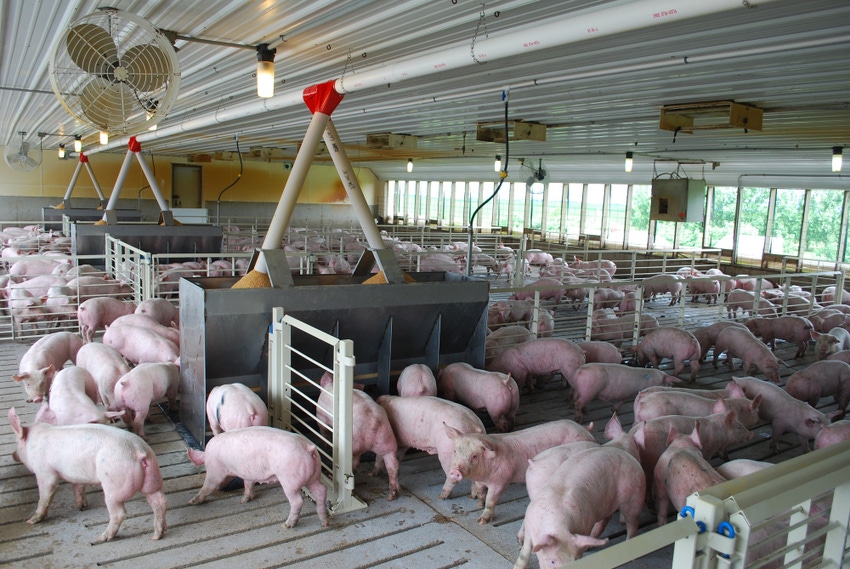L-lysine shortage impacts diet formulation
Shortage expected to continue for at least a few months into the first quarter of 2022.
November 11, 2021

By now, most producers have heard about the L-lysine shortage impacting prices and availability. The shortage is expected to continue for at least a few months into the first quarter of 2022. Spot prices have doubled or tripled for those that are not on contracts. For those on contracts, availability has been reduced with many producers trying to find additional L-lysine on the open market, which comes at a much higher price.
How does this influence diet formulation? Producers should work with their nutritionist to determine the best response for their farm. In general, most producers will need to reduce L-lysine usage. Whether because of an inability to obtain product or because the cost has become too high, the end result of reduced usage is the same.
Reducing the inclusion rate of L-lysine results in increased inclusion of intact protein sources, namely soybean meal. Gestating sows and grow-finish pigs can be fed much lower levels or no L-lysine without reducing performance. Nitrogen excretion will increase because of the excess crude protein in the diets; however, pig performance will not be reduced. As the price of L-lysine rises, soybean meal becomes a less expensive option than using the routine combination of feed-grade amino acids that are often supplemented with L-lysine in the diet (L-threonine, L-tryptophan, DL-methionine, and L-valine). These amino acids will price out one at a time as the L-lysine price increases until L-lysine is the only amino acid being supplemented. Eventually, if the price of L-lysine becomes great enough, it will also be removed from the diet with the inclusion of soybean meal (or other protein sources) increasing to meet all of the required amino acid needed by the pig.
For nursery pigs and lactating sows, however, diets are often already formulated to a maximum level of soybean meal. Thus, increasing soybean meal further in those diets is not an ideal option. Replacing the soybean meal with other intact protein sources is used but can become too expensive or the diet may contain more total protein than desired. Thus, producers will want to conserve the L-lysine that they have available to make sure they have enough product for nursery pig and lactating sow diets.
What is the maximum level of soybean meal that should be fed? The highest inclusion rate of soybean meal depends on the health status of the pigs and other factors; however, healthy pigs can use substantial levels of soybean meal in the diet without problems. In gestating sows and most grow-finish pig diets, the amino acid requirements can be met entirely by grain and soybean meal if required. For lactating sows, we prefer to limit the soybean meal inclusion rate to 30% of the diet. Once greater than 600 lb./ton is included in the diet, feed intake starts to be reduced. For nursery pigs, it depends on the dietary phase and how soybean meal levels are increased as pigs adjust to dry feed after weaning; however, we prefer to limit the maximum inclusion rate in late nursery (pigs above 25 lb. body weight) and early grower diets to around 34% of the diet. Lower levels of soybean meal will be used in diets prior to 25 lb. body weight.
How long will this problem last and what will be the eventual outcome? Right now, nobody knows. Amino acid companies will want to solve this issue to reduce the cost of L-lysine because high L-lysine prices reduce the use of all feed-grade amino acids. The sale of these amino acids is important to their profitability and low L-lysine prices are necessary to drive usage of the other amino acids.
Swine producers and thus feed mills will use substantially more soybean meal and less corn with the diet changes being made to deal with the L-lysine shortage. Whether these changes are enough to alter soybean meal and corn prices also remains to be seen.
The key take home points include reviewing all diets to make sure L-lysine is used as economically as possible and conserving available L-lysine to use in nursery and lactation diets.
Sources: Mike Tokach, Joel DeRouchey, Jason Woodworth, Bob Goodband, Jordan Gebhardt, Kansas State University, who are solely responsible for the information provided, and wholly own the information. Informa Business Media and all its subsidiaries are not responsible for any of the content contained in this information asset.
You May Also Like



